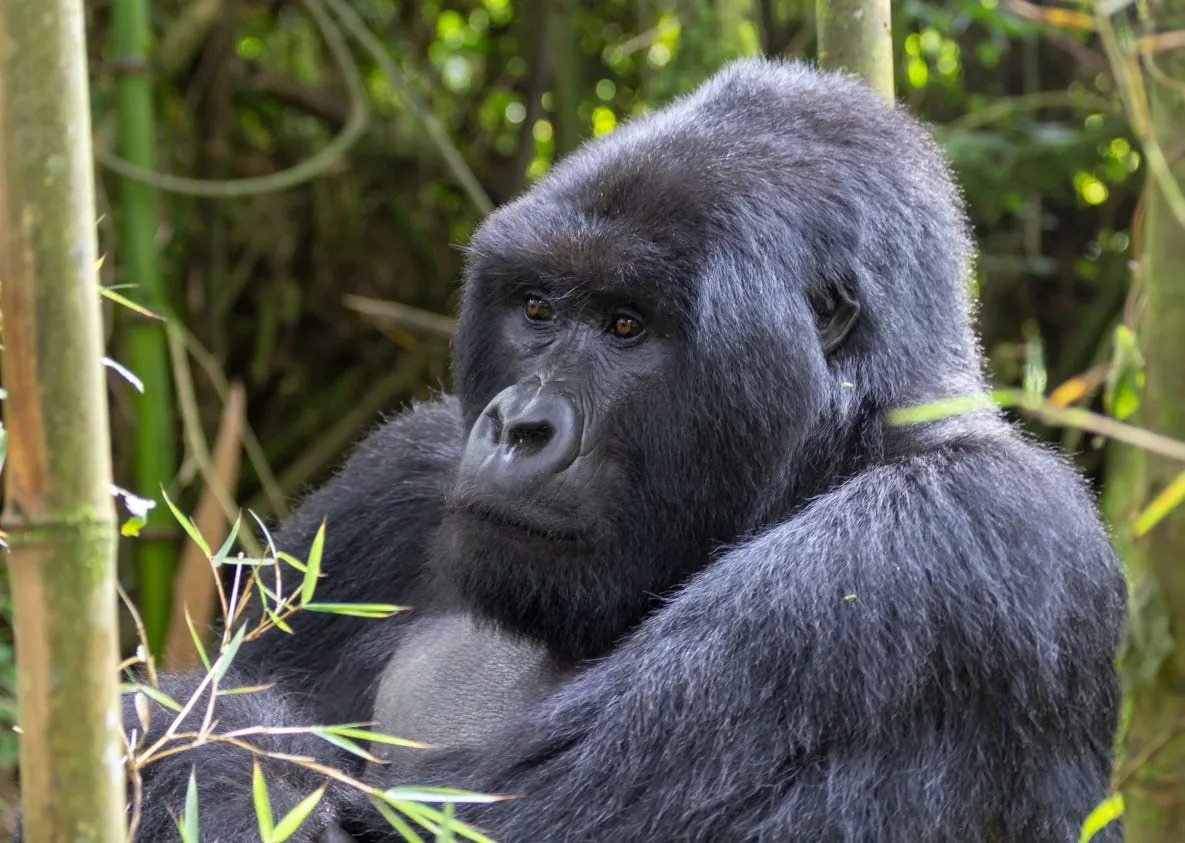
Does Florida have a troop of wild gorillas running around the Everglades? Could you stumble upon a wild mountain gorilla while wandering the wilderness in Georgia or Washington?
A clip from a satirical podcast series with over half a million followers on Facebook called Toilet Time TV picked up steam after featuring a video making the claims in a segment called "Is this real, chat?"
Over the course of the 20-minute segment, the show's two hosts showed four videos making various claims while asking its viewers to weigh in on whether they believed them or not.
The video in question originated from a TikToker that goes by the handle @parahan251, who is a self-proclaimed paranormal investigator, cryptozoologist, ufologist and occult specialist.
"This is something that blew my mind," Han starts the video. "There is a population of wild gorilla in the United States. And if you don’t don’t believe it, look it up yourself," he continued.
"In Florida, there is what’s called the eastern lowland gorilla. Now, at one time, there were all these wildlife sanctuaries and zoos, and when Hurricane Andrew came through, it basically destroyed a lot of these places, and the gorillas escaped," he said.
Like any good story, Han starts the claim off with a kernel of truth. Here's what we know.
Are there wild gorillas roaming Florida?
Han claims that the escaped gorilla wandered off into the “swamp land” and started a thriving troop in the Everglades, where they can still be found today.
Andrew was an extremely powerful Category 5 hurricane that made landfall near Homestead, Florida, in 1992. It was the costliest storm of its time and resulted in thousands of animals escaping in Dade County, which includes a large portion of the Everglades.
Local reporting from the Tampa Bay Times, the United Press International and even national reporting from The Washington Post all report that South Florida zoos were in a bit of a panic after facilities were damaged by Hurricane Andrew.
The Tampa Bay Times reported that “giant rodents, huge boa constrictors, hundreds of iguanas and all manner of monkeys are roaming Dade County.” The Times reported that 350 monkeys had escaped in the disaster, along with 50 to 100 baboons.
UPI reported that the University of Miami’s Division of Veterinary laboratory had between 350-400 rhesus and synomologus monkeys that had escaped. At the time, the reporting stated the overwhelming majority had already returned and been captured.
In all of the reporting at the time, the only mention of gorillas was reported by The Washington Post. A story published in August 1992 mentioned that paddle boats were hurled into the gorilla exhibit. There were no details regarding any damage to those facilities or escaped gorillas.
As far as history is concerned, there seem to be no reputable accounts of any gorilla having escaped their confinements in South Florida during Hurricane Andrew, leaving Han’s claims unsubstantiated.
A 2024 study that was peer-reviewed by the University of Florida Institute of Agricultural Sciences (UF/IFAS) indicates that there have been 20 species of mammals that have been introduced in Florida.
The list includes five monkey species, only three of which have established breeding populations: rhesus macaques, squirrel monkeys and vervet monkeys. No ape species were listed among the other mammals.
Where are eastern lowland gorillas naturally found?
Eastern lowland gorillas are a critically endangered subspecies of gorilla found in the Congo Basin in Central Africa, according to the World Wildlife Fund.
In the mid-1990s, there were about 17,000 eastern lowland gorillas. Scientists now estimate that the population has declined by more than 50%. Discovering a thriving group of eastern lowland gorillas in the U.S. would be a welcomed sight.
What about other gorillas found in the US?
In his video, Han makes a similar claim about mountain gorillas, who he says were brought to the U.S. in the 1940s and ‘50s as an experiment to see if they could adapt to the climate. Similar to the Florida theory, albeit without the help of a hurricane, the gorillas managed to escape and thrive.
This theory is even more far-fetched, however, as no one from the U.S. had done any major research around mountain gorillas during the ‘40s and ‘50s. George Schaller became the first notable U.S. researcher to study mountain gorillas in 1959.
All of Schaller’s research was conducted through field studies in Africa and was subsequently published in a book called “The Mountain Gorilla, which was published in 1963. Famed American primatologist and conservationist Dian Fossey picked up the mantle in 1967.
Prior to her unsolved murder in 1985, Fossey’s efforts led to groundbreaking discoveries around gorilla behavior. Her legacy continues to help study, understand and protect gorillas today through the Dian Fossey Gorilla Fund International.
There are no reputable sources that mention any sort of experiment conducted on mountain gorillas on U.S. soil.
This article originally appeared on Pensacola News Journal: Can you find wild gorillas living in Florida or the US?








Comments